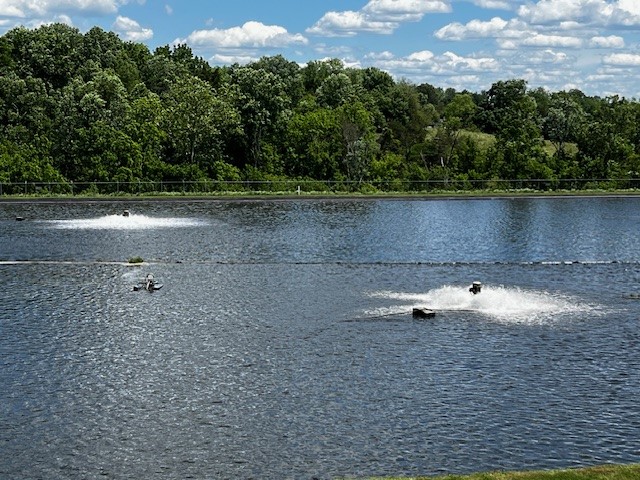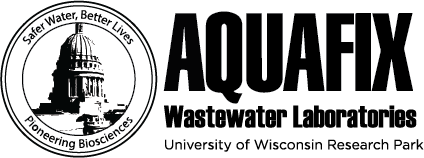
Maximizing Lagoon Performance
Through Sludge Reduction
INDEPENDENT DATA COLLECTED AND SUBMITTED BY:
Somerset, KY
Summary
This case study evaluates the financial viability and
effectiveness of Sludge RX in reducing sludge volumes and
restoring loading capacity in a wastewater lagoon system.
Pre, mid, and post sludge depth measurements were utilized
to assess the physical results. A comprehensive cost analysis
between Sludge RX and mechanical dredging was used to
determine the financial viability. Based on the data presented in
this study, it was concluded that Sludge RX is a cost-effective
and efficient alternative to mechanical dredging of sludge
in wastewater lagoon systems. Using Sludge RX resulted in
significant sludge reduction, operational benefits, and
cost savings.
Background
A wastewater lagoon system in Kentucky was experiencing
operational issues due to excessive sludge accumulation.
Primarily, the sludge accumulation was limiting the hydraulic
capacity of the lagoons. Mechanical dredging and
bio-augmentation are both strategies that have been used to
reduce sludge accumulation in wastewater lagoon systems.
Due to the potential cost savings, operational benefits, and
previous sludge reduction results, Sludge RX was chosen as the
best option for this application by the operators. The operators
worked with Aquafix to develop a plan to measure the
results and compare them directly against mechanical
dredging estimates.
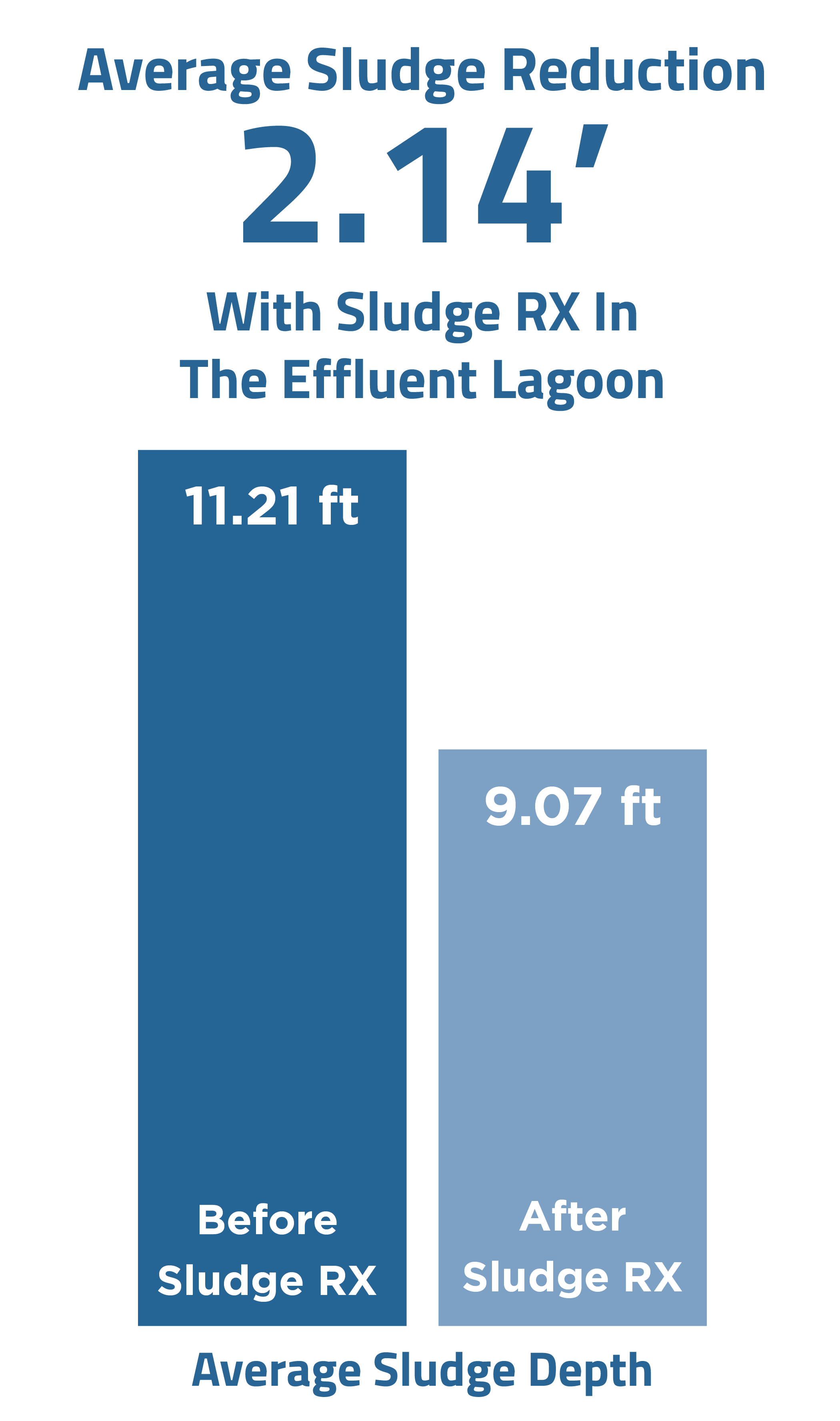
Objective
The primary goal was to evaluate the effectiveness of Sludge RX in reducing sludge volumes and restoring hydraulic capacity in the wastewater treatment lagoons. The secondary goal was to evaluate how costs and operational changes while utilizing Sludge RX compared to the alternative of mechanical dredging.
Methods
The city of Somerset elected to utilize a Sludge Judge to measure changes in sludge levels across the two lagoons pre, mid, and post treatment. Six data points were collected pre, mid, and post treatment in the Influent Lagoon. Seven data points were collected pre, mid, and post treatment in the Effluent Lagoon. Each lagoon received monthly applications of Sludge RX from April 2024 – October 2024 for a total of five treatments. Each application utilized ten bags of Sludge RX with each bag containing thirty pounds of product for a total of three hundred pounds of Sludge RX per application. The Sludge RX was distributed evenly across the total application area. Labor costs and materials were tracked throughout the program and compared against a quote received for mechanically dredging one million gallons of wet sludge.
Influent Lagoon Data Points (sludge depth in feet)
Effluent Lagoon Data Points (sludge depth in feet)
Results
After the project concluded, the data collected by the city of Somerset was analyzed. The Influent Lagoon and Effluent Lagoon averaged .25’ (168,627 gallons) and 2.14’(2,325,334 gallons) of sludge reduction respectively. A total of approximately 1.42’ (2,493,962 gallons) of sludge was removed across the two lagoons.
In addition, the total cost of the Sludge RX treatment to remove 2,493,962 gallons of wet sludge was calculated to be $14,984.10, including materials and labor. The estimated cost for removing 1,000,000 gallons of wet sludge using a mechanical dredge was $74,900 not including labor or operational cost resulting from taking the lagoons out of service. Adjusting the mechanical dredging estimate for comparison would result in a cost of approximately $186,797.79 to remove 2,493,962 gallons of wet sludge. For the same result, Sludge RX was approximately $171,813.69 less than the estimated cost of mechanical dredging.
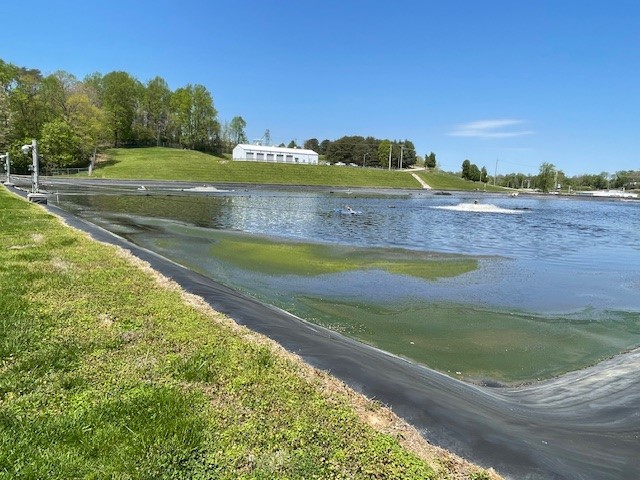
Before
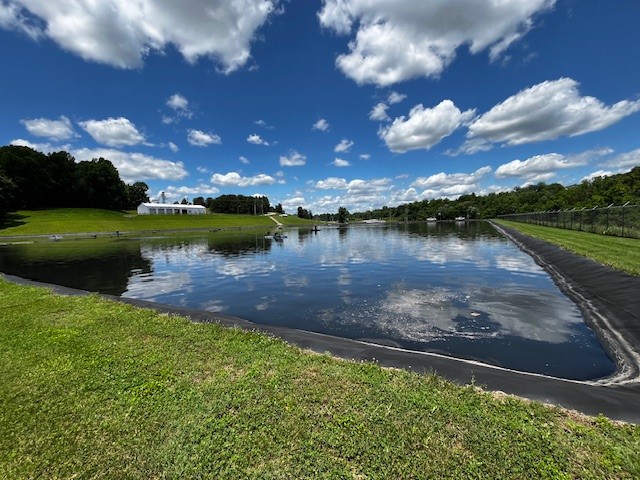
After
Conclusion
Based on the data collected at the Somerset wastewater treatment facility, Sludge RX is an effective option for reducing sludge volumes and increasing hydraulic loading capacity. Five treatments over a seven month period resulted in an average of 1.42’ or 2,493,962 gallons of wet sludge removed across both lagoons.
In addition, the Sludge RX treatment program was implemented without any operational changes or shutdown during the treatment period and was 92% less expensive than a comparable estimate for mechanical dredging. The city of Somerset saved approximately $171,813.69 by choosing to utilize Sludge RX versus a mechanical dredge to reduce sludge volumes and increase hydraulic loading. Therefore, the data in this study suggests that Sludge RX is an effective and financially viable option for removing sludge in wastewater lagoon systems.
Wet Sludge Removal Cost For 2,493,962 Gallons
Sludge RX
$14,984
(+2 Hrs labor for 3 employees)
Mechanical Dredging
$186,797.79
Not Including Landfill Fees
Future Directions
Building on the success of the 2024 Sludge RX application, the facility plans to continue treatments in 2025, incorporating seasonal, temperature-specific solutions. Polar RX will be introduced for cooler months, while OxyPaks XL will serve as an oxygen booster. Further monitoring and analysis will be conducted to optimize application rates, enhance cost efficiency, and validate long-term sludge management benefits.
